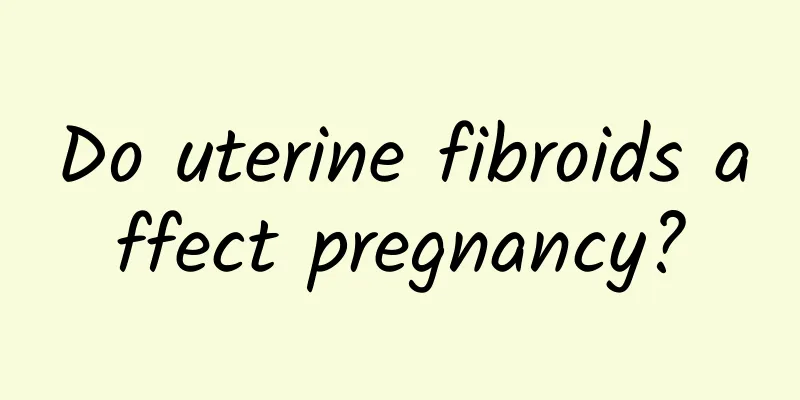What are multiple ovarian cysts and what are their symptoms

|
What are multiple ovarian cysts? What are the symptoms? Polycystic ovarian disease is caused by hypothalamus-pituitary-ovarian axis dysfunction that disrupts interdependence and regulation, so the ovaries cannot ovulate for a long time. Polycystic ovarian disease may lead to infertility because the patient cannot ovulate for a long time. Timely understanding of the condition can effectively treat it. The symptoms of multiple ovarian cysts mainly include the following aspects: 1. Discomfort in the lower abdomen: Due to the weight of the tumor itself and the influence of intestinal peristalsis and posture changes, the initial symptoms before the patient touches the lower abdominal mass cause the tumor to move in the pelvic cavity, involving its pedicle and pelvic infundibulum ligament, causing the patient to feel swelling and drop in the lower abdomen or bone fossa. 2. Increased abdominal circumference and abdominal mass: This is the most common phenomenon. The patient notices an increase in the size of the abdomen, or occasionally feels bloated and uncomfortable in the morning, so he presses the abdomen and finds a mass in the abdomen. 3. Abdominal pain: If the tumor has no complications, the pain is rare. Patients with ovarian tumors feel abdominal pain, especially those who have sudden onset, which is mainly caused by cyst pedicle torsion, tumor rupture, bleeding or infection. Malignant cysts often cause abdominal pain and leg pain, often requiring patients to go to the emergency room. 4. Menstrual disorders: Generally, ovarian or even bilateral ovarian cysts do not destroy all normal ovarian tissues and do not cause menstrual disorders. Some uterine bleeding does not belong to endocrine. It is because ovarian tumors change the distribution of pelvic blood vessels and cause endometrial congestion; or because ovarian malignant tumors directly metastasize to the endometrium, menstrual disorders are often combined with other secretory influences. 5. Compression symptoms: Large cysts can compress the area near the bladder, causing frequent urination and difficulty urinating. Huge ovarian tumors can cause dyspnea and palpitations, and ovarian tumors with a lot of ascites can also cause this symptom. 6. Infertility: The ovaries are where the eggs develop, mature, and are discharged. If the follicles at different stages of the ovarian cortex are damaged by cysts, the development, maturation, and discharge of the eggs will be impaired, which will lead to infertility. |
<<: At what age do women reach menopause?
>>: What should I do if there are blood clots during menstruation that cannot be discharged?
Recommend
Don’t drink milk on an empty stomach in the morning? Nutritionists debunk 4 milk myths
"I'm almost late for work, I'd bette...
I got pregnant again 30 days after a medical abortion.
Is it okay to get pregnant again 30 days after a ...
Symptoms of threatened miscarriage in early pregnancy
After becoming pregnant, pregnant mothers have a ...
Diagnosis and Analysis of Bartholinitis
Bartholinitis is an inflammation caused by infect...
Beware of the three major hazards of ovarian cysts
Ovarian cysts are a common gynecological disease,...
Why do ovarian cysts occur?
Generally speaking, there are many causes of ovar...
Hormone imbalance may generally lead to ectopic pregnancy
Hormone imbalance may generally lead to ectopic p...
How much does menopause treatment cost?
Experts say that there are many factors that affe...
Can women with premature ovarian failure and polycystic ovary get pregnant?
Women still have a chance to get pregnant with pr...
Traditional Chinese Medicine has a magic formula for weight loss. Ear acupuncture and laser acupuncture are new
Recently, a method of weight loss through ear acu...
Typical symptoms of uterine fibroids
Gynecological diseases, such as uterine fibroids,...
What should I pay attention to after laparoscopic surgery for uterine fibroids?
What are the precautions after laparoscopic surge...
What injections should be given for uterine fibroids? What injections should be given for uterine fibroids to prevent recurrence if menstruation is not coming?
What injections should be given for uterine fibro...
Who should not get the cervical vaccine?
The cervical vaccine that people often talk about...
Can pears help you lose weight? Nutritionist's modified version makes you slimmer
The summer heat is unbearable. With a loss of app...









